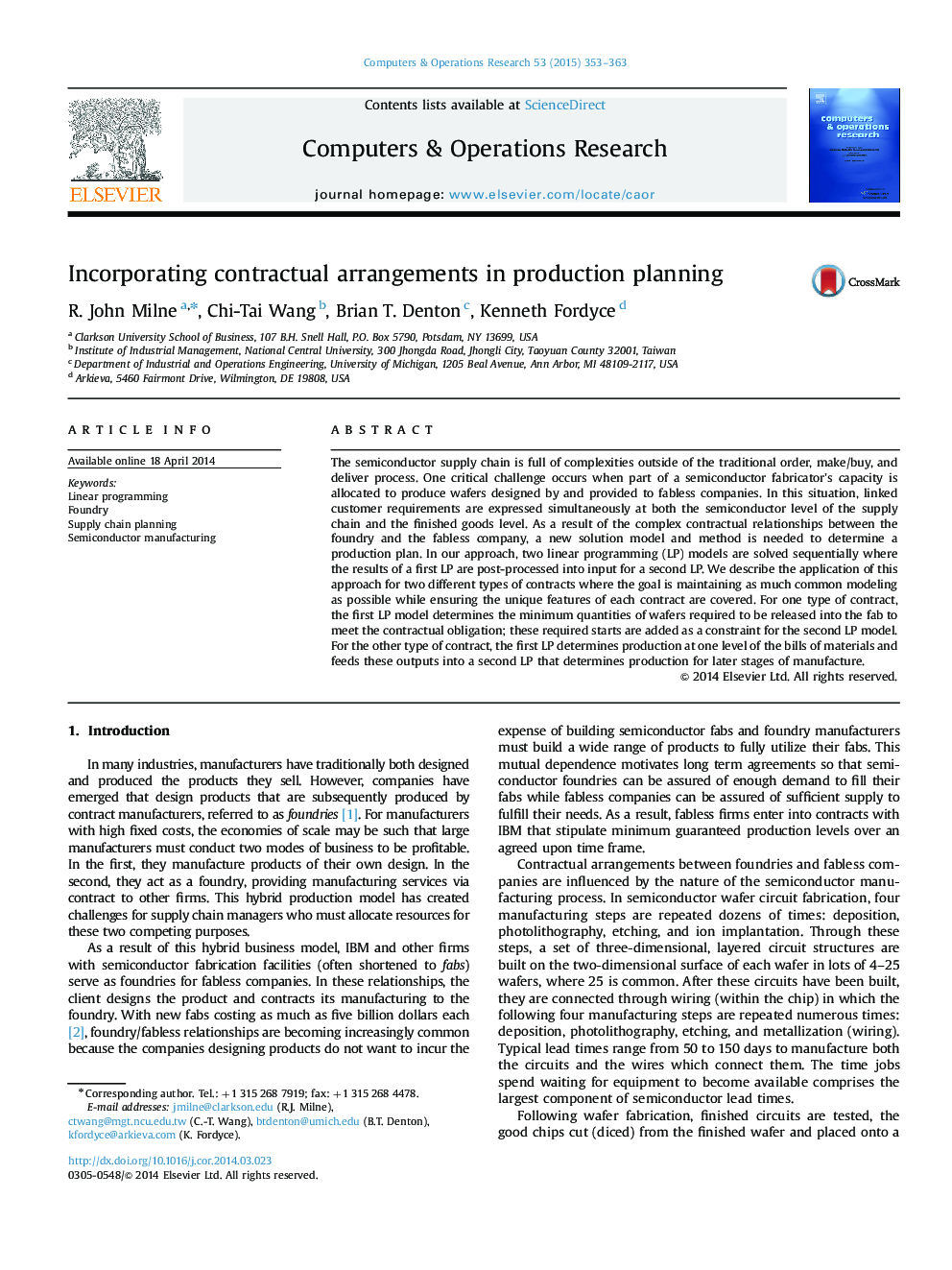| Article ID | Journal | Published Year | Pages | File Type |
|---|---|---|---|---|
| 475144 | Computers & Operations Research | 2015 | 11 Pages |
The semiconductor supply chain is full of complexities outside of the traditional order, make/buy, and deliver process. One critical challenge occurs when part of a semiconductor fabricator׳s capacity is allocated to produce wafers designed by and provided to fabless companies. In this situation, linked customer requirements are expressed simultaneously at both the semiconductor level of the supply chain and the finished goods level. As a result of the complex contractual relationships between the foundry and the fabless company, a new solution model and method is needed to determine a production plan. In our approach, two linear programming (LP) models are solved sequentially where the results of a first LP are post-processed into input for a second LP. We describe the application of this approach for two different types of contracts where the goal is maintaining as much common modeling as possible while ensuring the unique features of each contract are covered. For one type of contract, the first LP model determines the minimum quantities of wafers required to be released into the fab to meet the contractual obligation; these required starts are added as a constraint for the second LP model. For the other type of contract, the first LP determines production at one level of the bills of materials and feeds these outputs into a second LP that determines production for later stages of manufacture.
